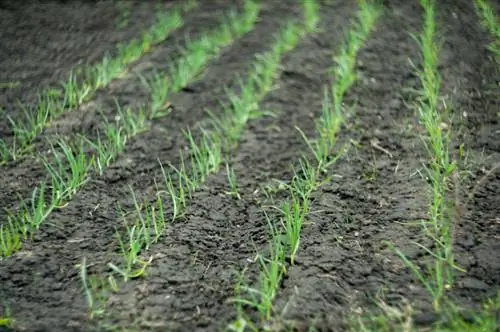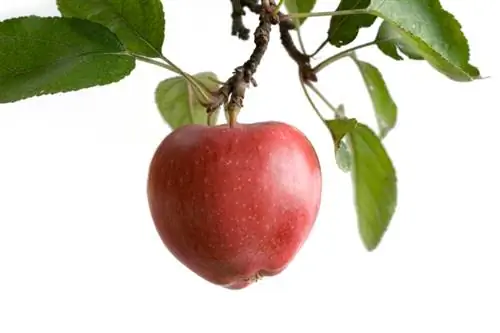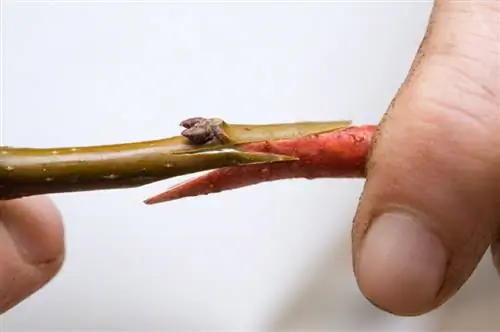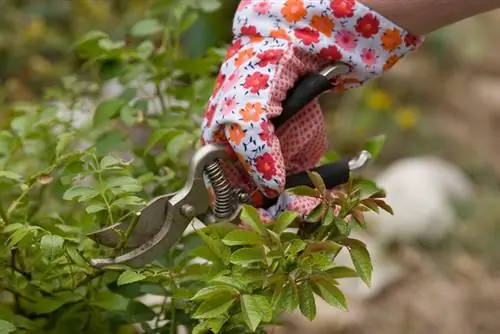- Author admin [email protected].
- Public 2023-12-16 16:46.
- Last modified 2025-06-01 06:02.
Roses can be easily propagated even by a hobby gardener - provided, of course, that they approach the matter with a little skill and the necessary specialist knowledge. Most noble roses cannot be propagated from cuttings without roots, but should be refined. The reason for this is usually that the noble flowers, in contrast to the rootstock used (usually wild roses), have poor growth properties and should be hardened for a certain climate or adapted to certain soil conditions.

How to propagate roses by grafting?
To propagate roses by grafting, choose a he althy wild rose as a rootstock, take a cutting from the floribunda, remove all leaves and flowers and cut out a bud. Insert the plug into a flat counter-cut of the base and carefully connect both parts (e.g. with a rubber band).
What is the difference between grafting and inoculation?
As a rule, roses are refined using what is known as grafting. All you have to do is cut out a single eye from the rose to be refined and transplant it into the rootstock. When grafting, on the other hand, an entire shoot is transplanted, although all leaves and flowers have of course been removed beforehand. There are various techniques for this, and we would like to introduce you to one that is particularly promising.
Grafting a rose - This is how it’s done
First of all, choose a suitable rootstock, which primarily involves he althy and robust wild rose species with long and stable roots. This base is cut back heavily.
- Now cut a cutting from the rose to be propagated.
- This has multiple buds.
- Put the cutting in the water for several hours.
- Now select a bud and cut deep into the wood just above it.
- Now guide the blade down behind the bud,
- which creates a section about two to three centimeters long.
- Carefully separate this from the cutting.
- Now make a flat countercut on the base,
- where you only cut the bark of the wood.
- Cut a “T” here too, i.e. H. a vertical and a horizontal cut.
- These should be about as long as the cut part of the rose.
- Now place the plug in the resulting slot,
- the bud should point upwards and outwards.
- Connect the finishing carefully (e.g. with a special rubber band for finishing).
If everything went well, the area will heal within a few days. In order for this to be successful, you must work very carefully and, above all, use clean and sharp tools. In addition to secateurs (€9.00 on Amazon), razor blades, for example, are ideal.
Tip
Roses should always be grafted in summer, as that is when the chance of growth is greatest. If possible, carry out the measure in the late afternoon so that the treated plant is not immediately exposed to the blazing sun, but can instead recover overnight.






